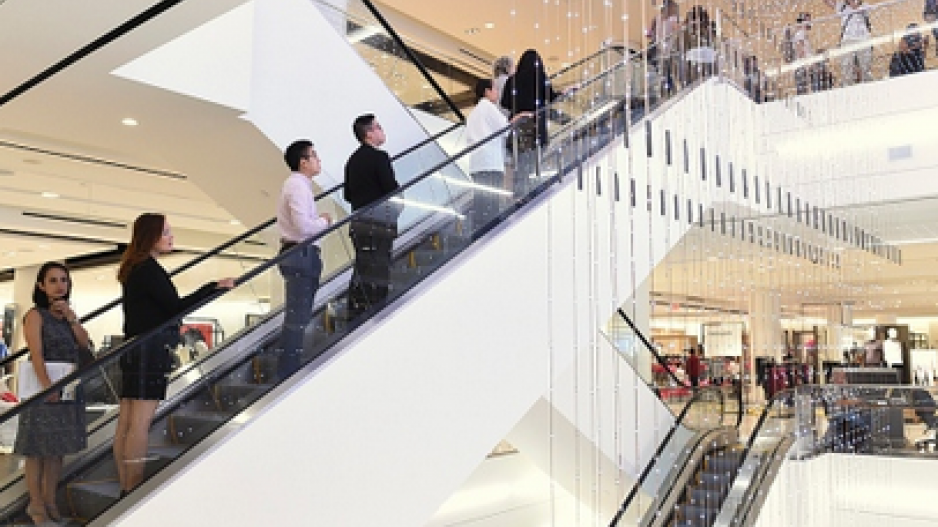Too much?
Nordstrom’s debut at Pacific Centre in the former Sears premises (themselves a makeover of an Eaton’s location, for those of elephantine memories) shows the potential of big old multi-level retail spaces.
With the failure of Target Canada and 15 other tenants in the past 14 months, Bentall Kennedy (Canada) LP investment manager Chrystal Burns told the most recent meeting of commercial real estate association NAIOP that cyclical and structural headwinds are giving landlords reason to trim their sails and tack in new directions.
“It gives us an opportunity to make those Target boxes, those Sears boxes, more productive,” she said. “We would welcome the day when we had an opportunity to get some of our Sears boxes back.”
Burns and fellow panellists David Morris and Dan Turner, principals of Form Retail Advisors Inc. and PCI Group, respectively, said the scenario is straight out of Real Estate 101: retail assets in good locations are going to be easier to fill than those that aren’t, and some large-format stores will need to be carved (as was the case at Pacific Centre) to accommodate a greater number of tenants.
However, the big question is: how quickly will the market absorb the space that comes back?
“It’s when, not if, and I just hope it’s not now,” Burns said of the Sears stores. “We’ve still got Target boxes. I think some of those boxes will take until 2017, 2018 to absorb.”
Not enough?
There is demand when it comes to development sites, however.
PCI Group is keen to find new development sites to keep it busy as it nears completion of Marine Gateway on Vancouver’s south side.
“It’s tough to do today. We love the city of Vancouver, we like urban, and so does everyone else,” PCI’s Turner told NAIOP.
And “everyone else” includes mainland Chinese investors, who have been more than willing to pay prices PCI can’t justify.
“We haven’t seen them do a lot of development, but we’ve seen them buy a lot of quality sites, at big numbers. [It] makes it very tough.”
Turner estimates that a development undertaken on the basis of the prices Chinese buyers are willing to pay would require prices for the residential component at least $200 a square foot above where they are today (goodbye, affordability).
Meanwhile, less expensive sites often aren’t in the locations retailers want. “Unless you have a great site,” he said, “you’re just not getting traction.”
Just right?
Westbank Projects Corp. president Ian Gillespie graciously thanked the design team in the trenches of Henriquez Partners Architects for the arduous hours of overtime spent refining the details of Telus Garden, downtown’s newest office tower, when it officially opened on September 17.
The details contributed to a platinum rating under LEED (Leadership in Energy and Environmental Design) for the tower, which features gardens for produce that staff can buy (all proceeds go to charity) and 288 solar panels that generate 3% of the tower’s power. Overall, the tower uses 80% less energy than a conventional building.
But as festivities continued, Vancouver planning and development manager Brian Jackson was asking the Urban Development Institute if LEED was still worthwhile. In his opinion, the venerable rating system is complex and lengthy.
“Is it still working for us?” he asked. “Is there a better, performance-based system of green standards that we could use?” •




